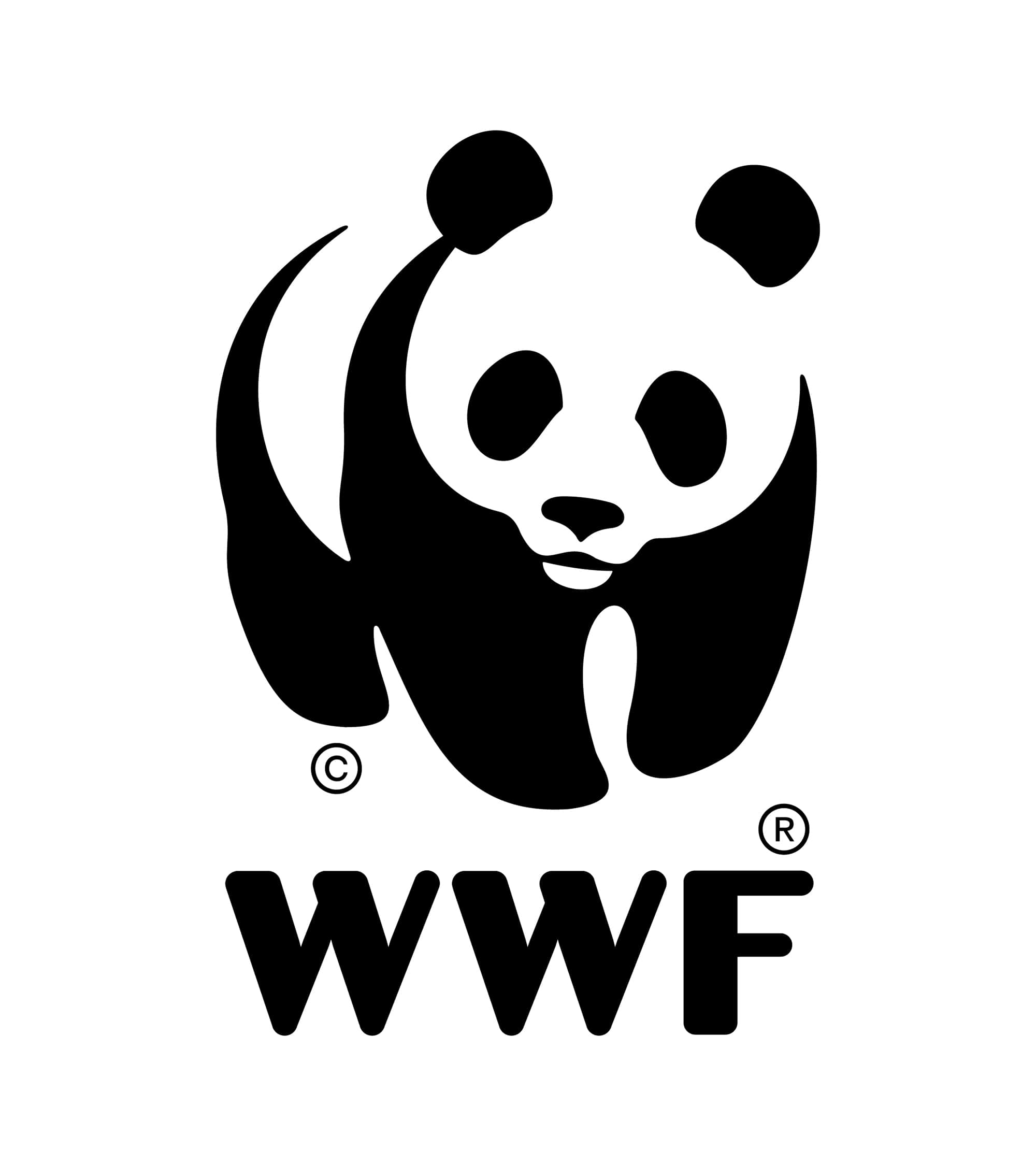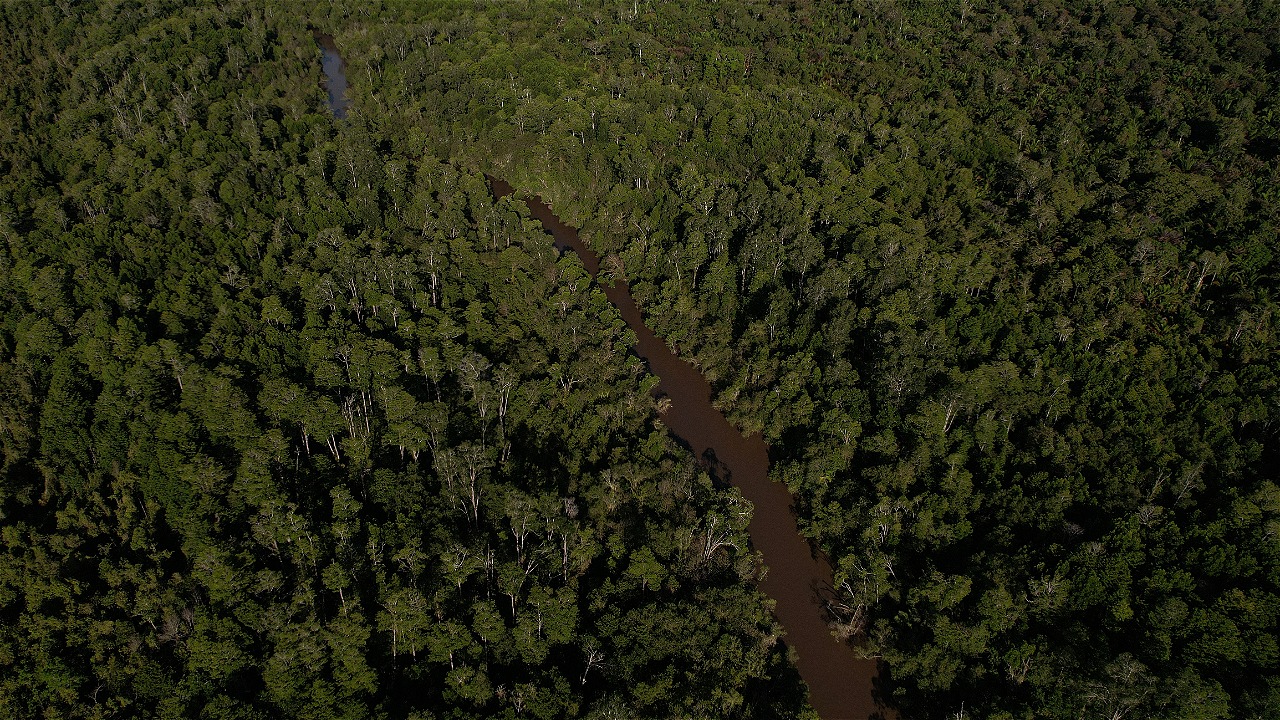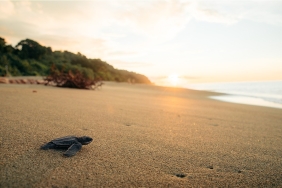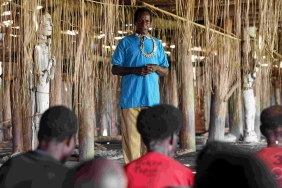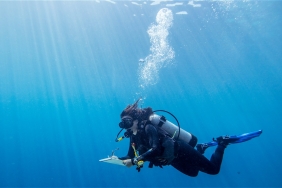FOREST AND THE TRATRA TRIBE COMMUNITY
Guryad Village is one of the villages in Jayapura Regency right in the Unurum Guay District. This village is on the Jayapura Regency government road that leads to Sarmi Regency. Guryad Village is geographically located in the northern part of Papua Island which can be reached from Jayapura Regency by using 2-wheeled and 4-wheeled vehicles with 3-4 hours of travel by crossing several villages and districts included in the Jayapura Regency administrative area.
The customary area for Guriat Village, Unurum Guay District is ± 1,700 km2. Within the customary area of the Tratra tribe there is a very large forest area and rivers that flow within it which are controlled by the tribal chief (ondoafi). One of the largest rivers in this area is the Tuarim river which has a length of 500 m and other small rivers which also store various biological and non-biological natural resources.
The Guay people are generally a gathering community in the past and until now the forest is still very important for their survival. For example, to find food, hunt wild animals, protect the beliefs of ancestral spirits and historical areas and become another important source for the survival of life and posterity. them.
The Tratra tribe is one of the sub-tribes of the large Guay tribe that inhabits the Unurunm Guay District area. The language used daily is Orya, which is also used throughout this region in addition to Indonesian.
The forest in the eyes of the Tratra tribe is a very valuable wealth, because it contains many needs and supports for daily life because in general the Tratra tribe is a gathering community whose life is very dependent on the forests and rivers around it as in general the Papuan people. According to them, the forest can be a home and a place to find food and a place where the spirits of their ancestors reside,
This forest area also holds various natural resources, especially the types of wildlife that are natural forest dwellers in general in the forests of Papua, these types of forest animals include cuscuses, tree kangaroos, birds of paradise, cassowaries, wild boars, deer, crocodiles, partridges (maleo), mambruk birds, parrots, parrots, while river products in the form of turtles, nine fish, and other natural products in the form of coal, river stone, river sand, truly extraordinary natural beauty and other natural wealth that is no less interesting is the playground of birds of paradise in the morning and evening. As well as several other types of animals and plants that have not been identified and are endemic species.
Much of this natural wealth is untapped. There are many places or areas that are good for natural tourist areas, such as salt water sources, hot springs, lakes, waterfalls, cypress forests, pig caves, needle mountains, cassowary mountains, wind caves, birds of paradise playgrounds, and several other areas that are very potential to be developed into very impressive natural tourist areas.
In the river area there are endemic species of animals such as colored eels whose diameter can reach the thigh of a normal adult. Other species are rock shrimp and Nine fish and many others.
The forest in this area is so rich in natural resources, but for the life of the Tratra tribe, which is a community that used to live in an old village called Kampung Guay, a community that transmigrated to the village which is now called Kampung Guryad because of the entry of a company engaged in forestry by taking forest products in the form of wood. Some of them still maintain forest areas in customary forests, each of which is held by tribal chiefs with a large enough area, which can reach thousands of hekatar. But with the entry of timber companies, some of these forests are threatened with loss and have an impact on other natural resources that are so abundant. So that some of these communities lose their forests and this has an impact on their lifestyle which will and or has changed from being a hardworking society to a passive society. This can be seen with some areas where forests can no longer be utilized as agricultural areas, but are left as neglected areas. Until now, the forests in this area are still maintained, especially in forest areas that are customary forest areas held by tribal chiefs (Ondoafi), because according to the tribal chiefs, the forest will one day be enjoyed again by their children and grandchildren so that at the present time it is very difficult to be released to other uses, such as HPH which manages the area to utilize timber forest products. Some forests have been utilized for the utilization of timber forest products that were once managed by PT WMI based in Biak Numfor District, but now the area is no longer used because the contract period has expired, so that the forests left are secondary forests whose tree species are just undergoing development. The success of the ondoafi to protect the forest is one of the experiences gained from the HPH that previously entered to collect timber forest products, this learning is based on forest utilization that does not see certain areas that have historical value, cultural value and animal wealth. So that now the understanding of the community, although only a little regarding the protection of the forest and its contents, can be recognized.
Hunting activities carried out by the community in general are only for food needs and when there is an event held in the village. Hunting activities are usually carried out for 2-3 days using a bow and dog assistance. The journey that can be traveled also varies from kilometers to tones that are only around the forest.
